Not all outdoor sleeping experiences require a tent or hammock – if you’re a fan of ultralight backpacking, then you’ve probably thought about using a sleeping bag as an underquilt. But the question is, can you actually use a sleeping bag as an underquilt? The answer is yes! In this comprehensive guide, we’ll show you all the tips and tricks to make sure your sleeping bag serves as the perfect underquilt for your camping trips. From understanding the benefits of using a sleeping bag as an underquilt to creating insulation layers that will keep you warm and cozy all night – this complete guide has got it all covered!
What is an Underquilt?
An underquilt is a type of lightweight, synthetic insulation designed to be suspended below the hammock and provide warmth and comfort. It works by trapping warm air between your body heat and the cold air around you. This prevents convection currents from sucking away all your body heat while you sleep in your hammock. Underquilts also act as wind-proof barriers, blocking out any drafts that may occur during the night, keeping you nice and cozy.
Underquilts provide significant advantages over sleeping bags when it comes to providing warmth in a hammock. The main advantage is that they are designed specifically for use with hammocks, meaning they hug close to your sides rather than bunching up beneath you as a sleeping bag might. They also provide better ventilation, keeping your body temperature regulated throughout the night. Finally, because they are suspended below the hammock, they are less likely to be crushed or compressed by your bodyweight like a sleeping bag would be.
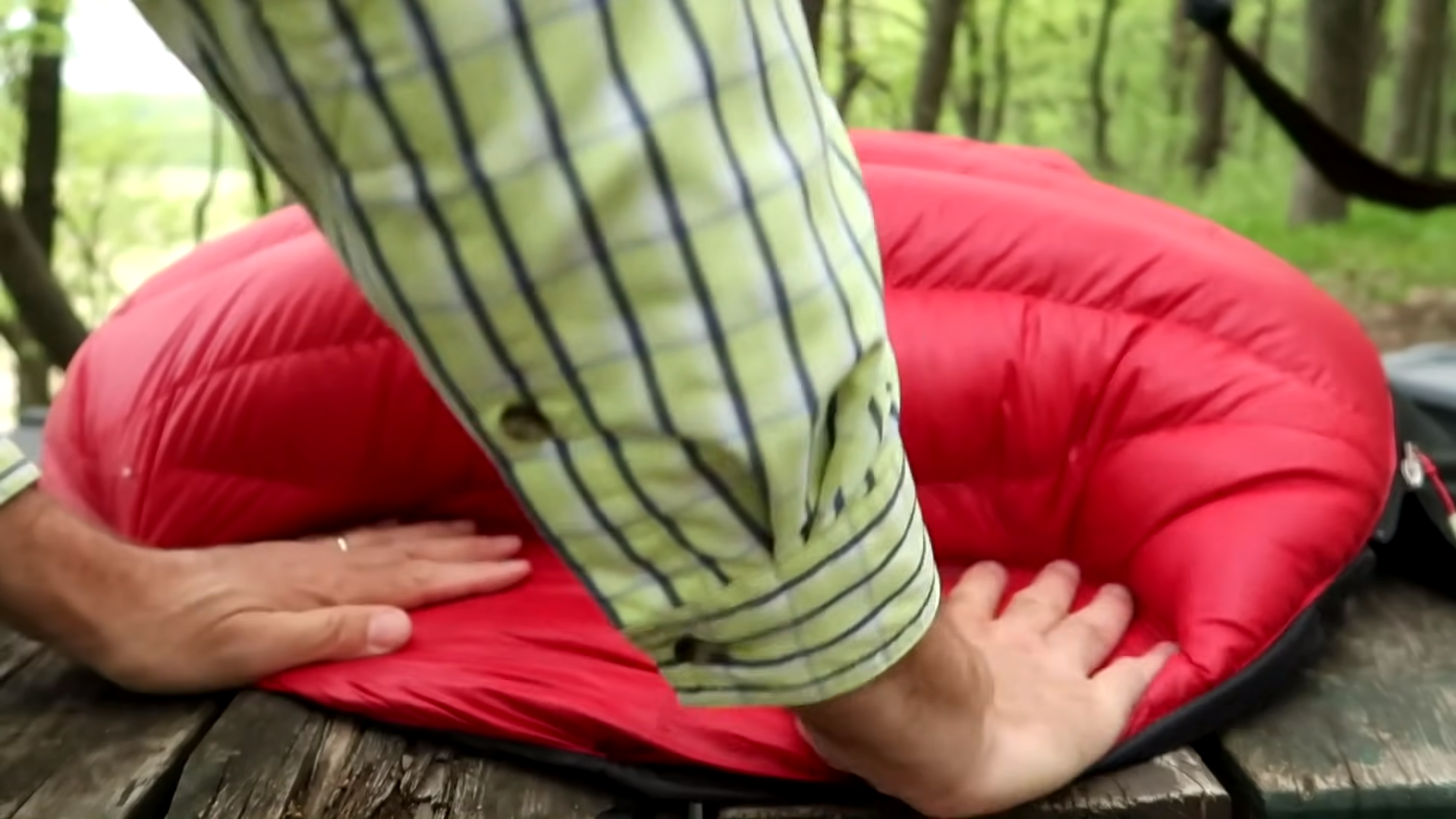
Why do you need it?
Having a good night’s sleep is essential when you are camping or backpacking. An underquilt is an important part of your sleeping system, providing insulation and keeping your body warm during the colder months. But purchasing one can be expensive, so many people want to know if they can use a sleeping bag as an alternative.
The answer is yes! A sleeping bag can be used as an underquilt and there are several advantages to doing so. It helps keep you warm in cold weather while significantly reducing the weight of your gear. In addition, it is much more compact than buying an additional piece of equipment which makes it great for long-distance hikes or expeditions.
If you decide to use a sleeping bag as an underquilt, there are several tips to keep in mind. The most important one is that you should always use a synthetic version of a sleeping bag instead of a down-filled one since synthetic materials hold up better when compressed against the ground. Ensure that your sleeping pad and quilt fit well together so that there are no gaps where cold air can get in. Finally, you should practice setting up the quilt ahead of time so that you know how to do it properly when you go camping or hiking. [1]
Pros and Cons of Underquilts
Underquilts are a great way to keep warm outdoors, but they can also be expensive and difficult to install. If you’re looking for an alternative option, using a sleeping bag as an underquilt might be worth considering. While this is not the traditional way of setting up an underquilt, it can still provide some insulation from the cold air below.
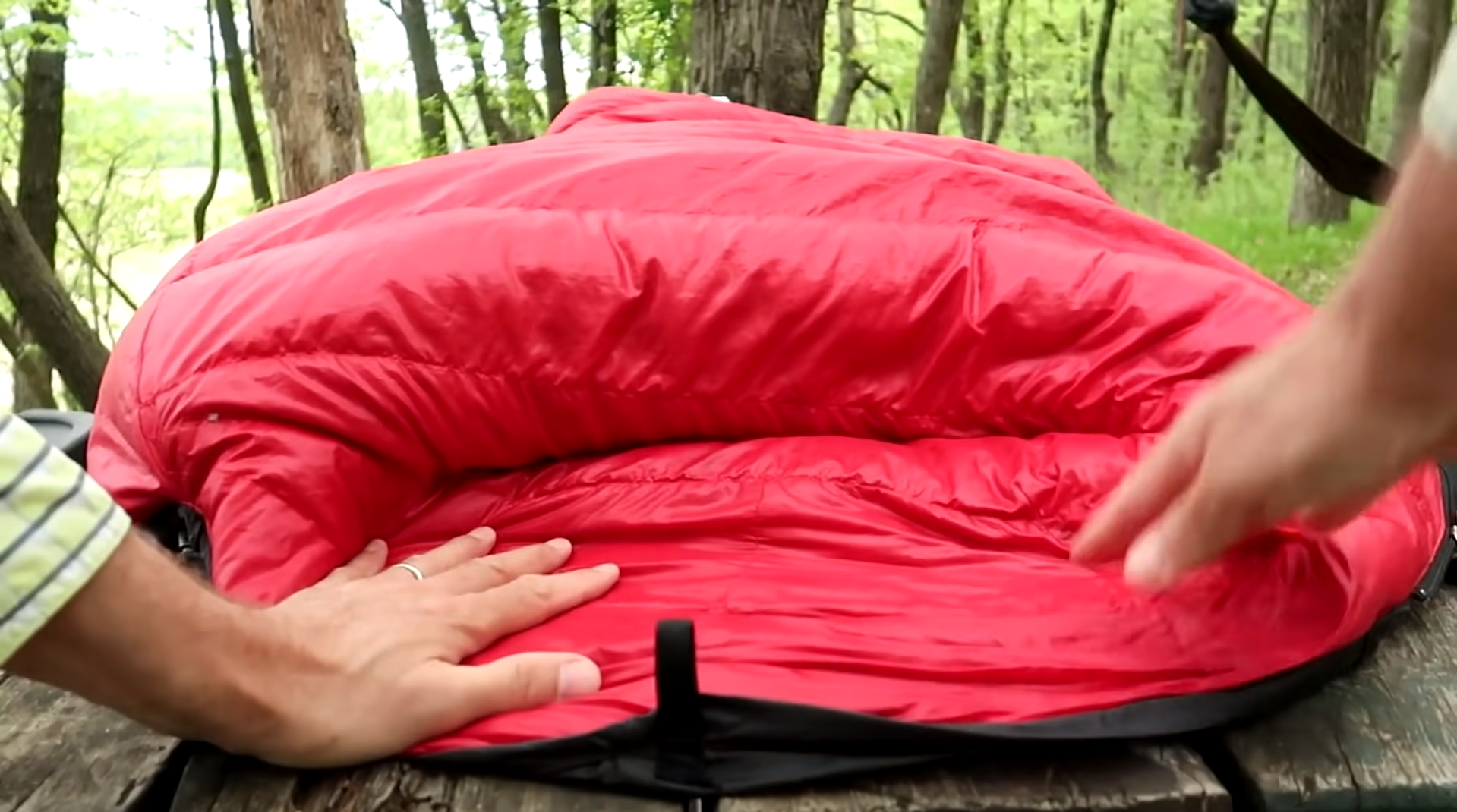
Pros:
- A sleeping bag is much more affordable than an underquilt and is easier to transport since it takes up less space and weighs less.
- It’s also easier to set up than an underquilt because all you have to do is lay it out on top of your sleeping pad.
- If you’re camping in a place with unpredictable weather, a bag as an underquilt can provide some extra warmth and comfort if needed.
Cons:
- A sleeping bag isn’t designed specifically for use as an underquilt so it won’t be as effective at insulating you from the cold air below.
- It can also be difficult to keep the bag in place which means you may end up spending more time adjusting it than you would with an underquilt.
- Additionally, if your sleeping bag is too thick or bulky, it could compress the insulation underneath and make the space beneath you even colder.
If you’re looking for a cost-effective way to keep warm outdoors, then it might be worth giving this option a try. Just make sure that you take into consideration the pros and cons.
Do You Actually Need a Sleeping Bag for Underquilts?
The answer to this question is a resounding “no”. You don’t need a specific sleeping bag for underquilts – you can make do with any old sleeping bag. However, that doesn’t mean you should use just anything as an underquilt.
There are some important considerations. Firstly, consider the type of insulation – down or synthetic? Down is generally lighter and more compressible than synthetic fibers, but it’s also more expensive. Synthetic materials are heavier and bulkier but they tend to be cheaper and retain heat better when wet. It’s up to you to decide which one suits your needs best!
Finally, consider the size and shape of the sleeping bag. The bigger and more spacious it is, the easier it will be to move around in your hammock without feeling restricted. A tapered or mummy-style bag may not provide enough room to comfortably sleep in a hammock – but if you’re only using it as an underquilt then this isn’t such an issue.
In short, while you certainly don’t need a specific type of bag for underquilt purposes, it is still important to consider the above points when choosing a sleeping bag for this purpose.

When Do You Need a Sleeping Bag with an Underquilt?
If you plan on spending a lot of time outdoors, especially during the colder months, then it makes sense to invest in a quality sleeping bag and an underquilt. An underquilt is essentially an additional layer of insulation that goes underneath your sleeping bag.
The main benefit of using an underquilt is that it adds an extra layer of protection from the cold ground beneath you. It helps keep your body heat trapped inside, which keeps you warm and comfortable through the night. The underquilt should be chosen based on the climate and season you’ll be using it in – for example, if you are camping in winter conditions then a winter-rated underquilt may be more suitable than a summer-rated one.
So if you plan on spending time outdoors in cold weather or regions with high humidity levels then using a sleeping bag with an underquilt is often the best way to stay warm and comfortable.
Ultimately, it’s important to understand your camping needs and choose the right type of bag with an underquilt accordingly. With the right combination, you can maximize warmth and comfort while enjoying outdoor adventures in cold weather.
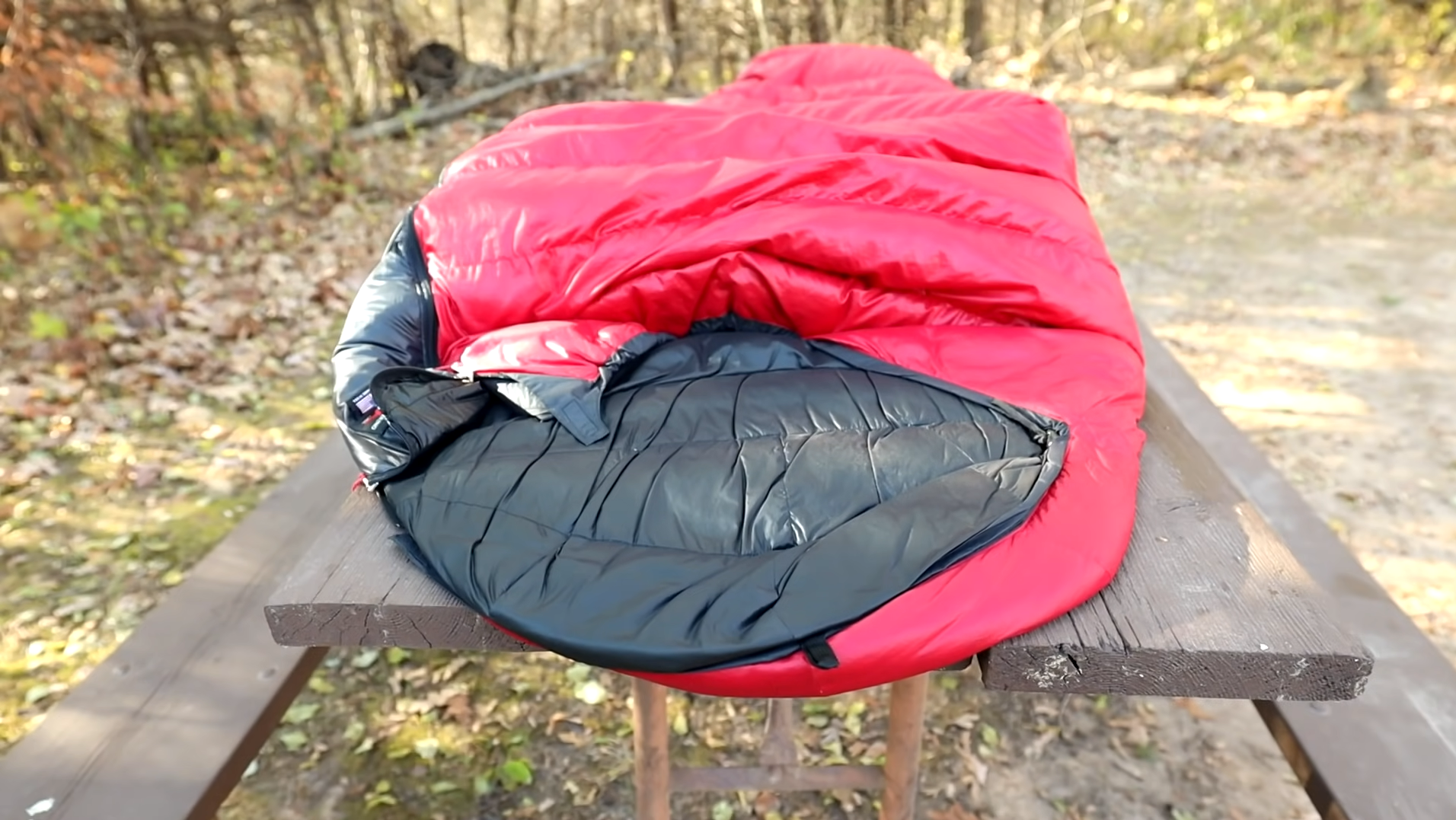
Using a Sleeping Bag as an Underquilt
Underquilts are an essential part of a hanging sleep system. Unlike sleeping pads or bags that you lay on the ground, underquilts hang underneath you. They provide insulation against cold air and help keep your body heat in while suspended off the ground. A bag can make for an alternative to an underquilt, if used correctly.
There are some tips to consider:
- Choose one made out of breathable fabric with synthetic or down fill to increase warmth.
- Make sure it’s large enough to cover the entire length of your hammock when opened up at its fullest capacity.
- Undo all the zippers before hanging to allow the bag to “breathe” and trapped heat escape.
- Suspend the sleeping bag directly underneath your hammock using looped shock cords or other suitable suspension system.
- Hang with enough slack so it doesn’t pull tight when you lay in the hammock. [2]
If you plan on camping in temperatures below freezing, an actual underquilt designed for that temperature range is recommended for maximum comfort and warmth.
Some Cons
When using your sleeping bag as an underquilt, there are also some drawbacks to consider:
- Due to the design, most sleeping bags are not designed specifically for use as an underquilt.
- The fill may not be suitable for cold temperatures due to a lack of insulation.
- If it’s too close to the ground, condensation can build up and become trapped in the bag.
- It won’t provide enough slack if you hang it too tightly on the suspension system.
- When used in wet weather, they will retain water and weigh down your hammock making it uncomfortable or even impossible to sleep.
How to Hang a Sleeping Bag Underneath a Hammock?
If you’re looking for an economical alternative to a real underquilt, using a sleeping bag is a great option. It’s relatively simple to hang a bag underneath the hammock and can provide excellent insulation from the cold ground. Here are the steps to get you started:
- Attach carabiners or S-hooks to the loops on the bag. Ensure they’re securely attached so that they won’t come undone during use.
- Loop each of these carabiners through the corresponding loops on your hammock straps (or directly onto your suspension system). This will allow you to suspend the sleeping bag beneath your hammock.
- Ensure that the bag is securely attached to your hammock and all carabiners are closed. You may want to double check them once you’re in your hammock just to make sure they haven’t come undone during setup.
- Close the sleeping bag around you or stuff it with extra clothes and other items for added insulation from the cold ground below.
That’s all there is to it!
Other underquilt options
Of course, you don’t have to use a sleeping bag as an underquilt. There are several other options available. The two most popular choices are down-filled and synthetic underquilts.
Down-filled underquilts provide excellent insulation and breathability compared to synthetic replacements. This type of insulation is lightweight, compressible, and typically offers superior warmth for its weight. However, they can be more expensive than synthetic options.
Synthetic underquilts are usually made of polyester or nylon fabric filled with a manmade insulating material such as Primaloft or Thermolite. Synthetic insulation may not offer the same warmth as down-filled insulation but it’s cheaper and easier to care for.
FAQ
Can you use a sleeping bag instead of an Underquilt?
Yes, you can use a sleeping bag instead of an Underquilt. However, it is important to remember that although a bag will provide some insulation underneath your hammock, it may not be as effective as an Underquilt. This is because the material used to make the bag does not allow air to circulate like the synthetic materials in an Underquilt do.
Also, if you plan on using a bag for colder nights, opt for one with a higher temperature rating than what your hammock requires. Additionally, consider adding extra layers such as blankets or foam pads inside the bag to increase insulation and warmth. Finally, always check your gear before going out camping to ensure you have everything you need for a comfortable night’s sleep. [3]
Can I use a sleeping bag as a quilt?
The short answer is yes, you can use a sleeping bag as a quilt if necessary. However, it’s important to keep in mind that most bags are not designed to be used as an underquilt and may not provide the same level of insulation and warmth as a traditional quilt.
If you do decide to use a bag in place of an underquilt, there are some considerations to make sure the setup will work properly. First off, ensure your bag is filled with synthetic or down-filled insulation; this will help trap heat and provide more consistent warmth during colder temperatures. You’ll also want to choose a sleeping bag with at least 800 fill power – anything less won’t provide enough insulation.
It’s also important to note that a sleeping bag may not be as compressible or lightweight as an underquilt, making it less convenient for camping and backpacking trips. Additionally, sleeping bags are usually designed to fit snugly around your body; while this is great for retaining warmth, it can limit your mobility and make you feel confined when moving around in the night.
Overall, using a sleeping bag as an underquilt is certainly possible but may not provide the same level of comfort and insulation as a traditional quilt would. If you’re looking for a reliable way to stay warm on cold nights outdoors, consider investing in a dedicated quilt instead!
How do you make an Underquilt out of a sleeping bag?
Making an Underquilt out of a sleeping bag is not as difficult as you may think. It just takes some time and patience, but the end result can be really rewarding. Here are the steps to take when using a bag for an underquilt:
- Start by selecting the right type of sleeping bag. Choose one that is lightweight (as it will hang from your hammock) and compressible (to make packing easier). Also, select a sleeping bag with synthetic insulation, such as Primaloft or Thinsulate, as these materials retain warmth better than down feathers when wet.
- Measure and cut two pieces of fabric to fit around your hammock, leaving enough space for movement and ensuring the fabric will not pull too tightly around your hammock.
- Sew the two fabric pieces together, making sure to leave enough space for the sleeping bag between them.
- Place the sleeping bag inside the fabric pieces and securely sew it into place, creating an underquilt that is tailored to your specific needs. Make sure to reinforce any stitches with extra thread, as this will help keep your underquilt from coming apart over time.
- Attach straps or carabineers to each end of the underquilt so you can easily hang it from your hammock’s suspension system. [4]
And that’s it! Now you know how to make a lightweight, compressible, and warm underquilt out of a sleeping bag. Have fun exploring and camping with your new creation!
Remember to always be safe when exploring nature and take extra precautions in case of wet weather conditions. Enjoy making the most of your adventures!
Can you just use a sleeping bag in a hammock?
In theory, yes, you can use a sleeping bag in a hammock. It is the easiest way to stay warm while camping or hiking in a hammock. However, it’s not the best way and does have its drawbacks. A sleeping bag won’t provide the same temperature control that an underquilt will and isn’t as comfortable either. A sleeping bag also doesn’t offer insulation from beneath your hammock like an underquilt does. So if you’re looking for a more comfortable sleep while out in nature, an underquilt is definitely worth investing in.
The main advantage of using a bag instead of an underquilt is its versatility – it can be used anywhere since it’s not attached to the hammock. You can also use it as a blanket in the summer if you don’t need all its warmth. [5]
Overall, using a sleeping bag in place of an underquilt is an option but not your best option. If you want a comfortable night’s sleep out in nature, an underquilt is worth looking into. It’ll provide better insulation and temperature control than a sleeping bag ever could. Plus, since it will be attached to your hammock, it won’t move around during the night like a sleeping bag would. So consider investing in one for your next outdoor adventure!
Useful Video: Q&A / Episode #1 / Why not a sleeping bag / Hammock Camping
Conclusion
All in all, whether you choose to use a sleeping bag as an underquilt or not is completely up to you. If you’re looking for a quick and easy fix that won’t break the bank, then it might be worth giving it a try. However, if you want something that will last longer and work better in colder temperatures, it would be wise to invest in an actual underquilt.
Ultimately, what matters most is your comfort level while camping. Taking such steps can help ensure that you have the most pleasant experience possible!
References:
- https://purehiker.com/sleeping-bag-as-an-underquilt/
- https://outdoorishome.com/sleeping-bag-underquilt/
- https://www.hammockforums.net/forum/showthread.php/40302-Can-I-use-a-sleeping-bag-as-an-underquilt
- https://gear-report.com/how-to-make-a-diy-camping-hammock-underquilt-from-a-sleeping-bag/
- https://unigearshop.com/en-gb/blogs/adventure/an-extensive-guide-to-using-a-hammock-with-a-sleeping-bag


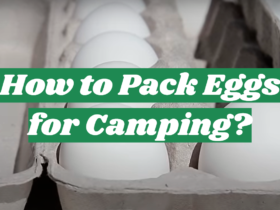


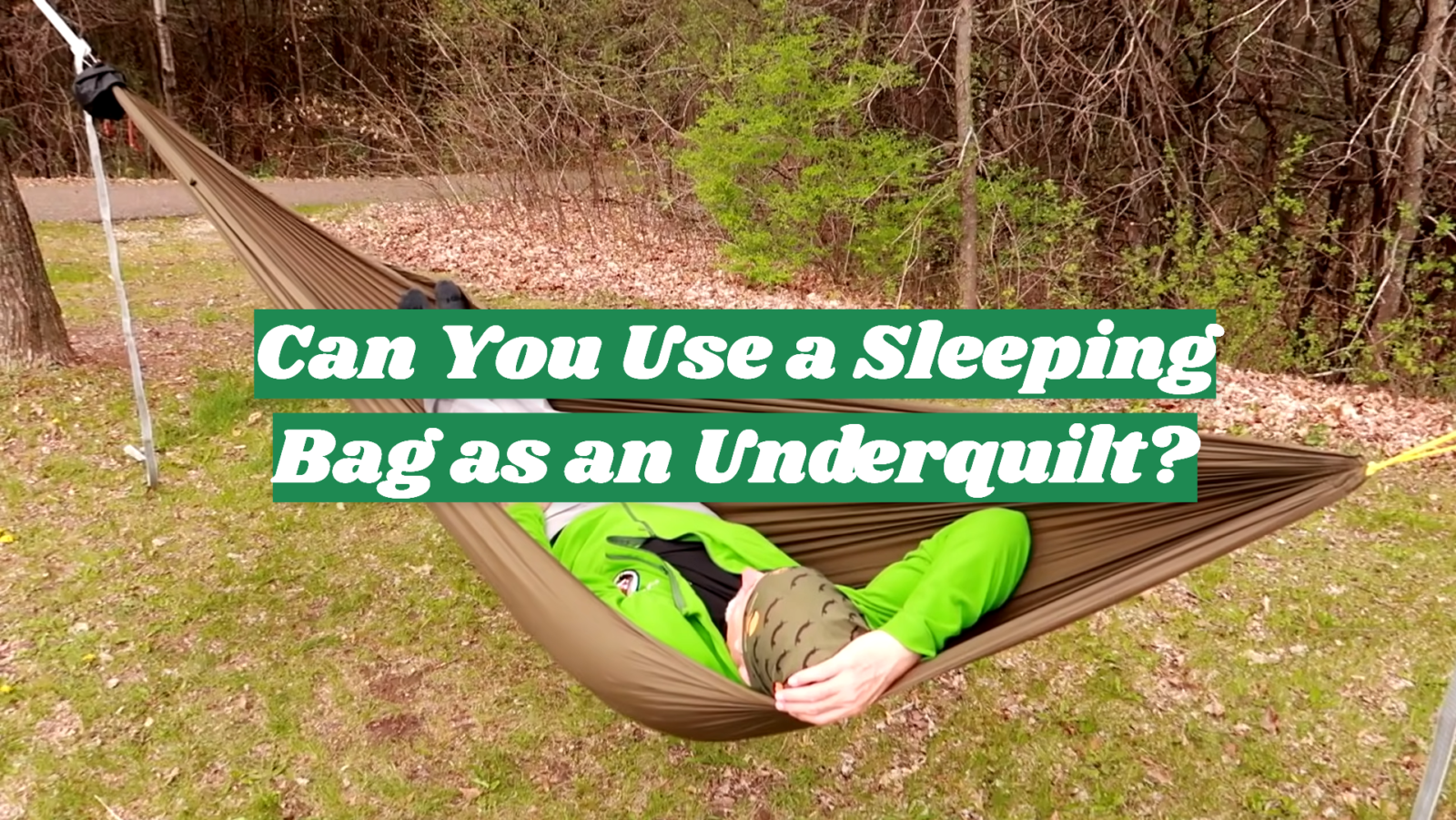
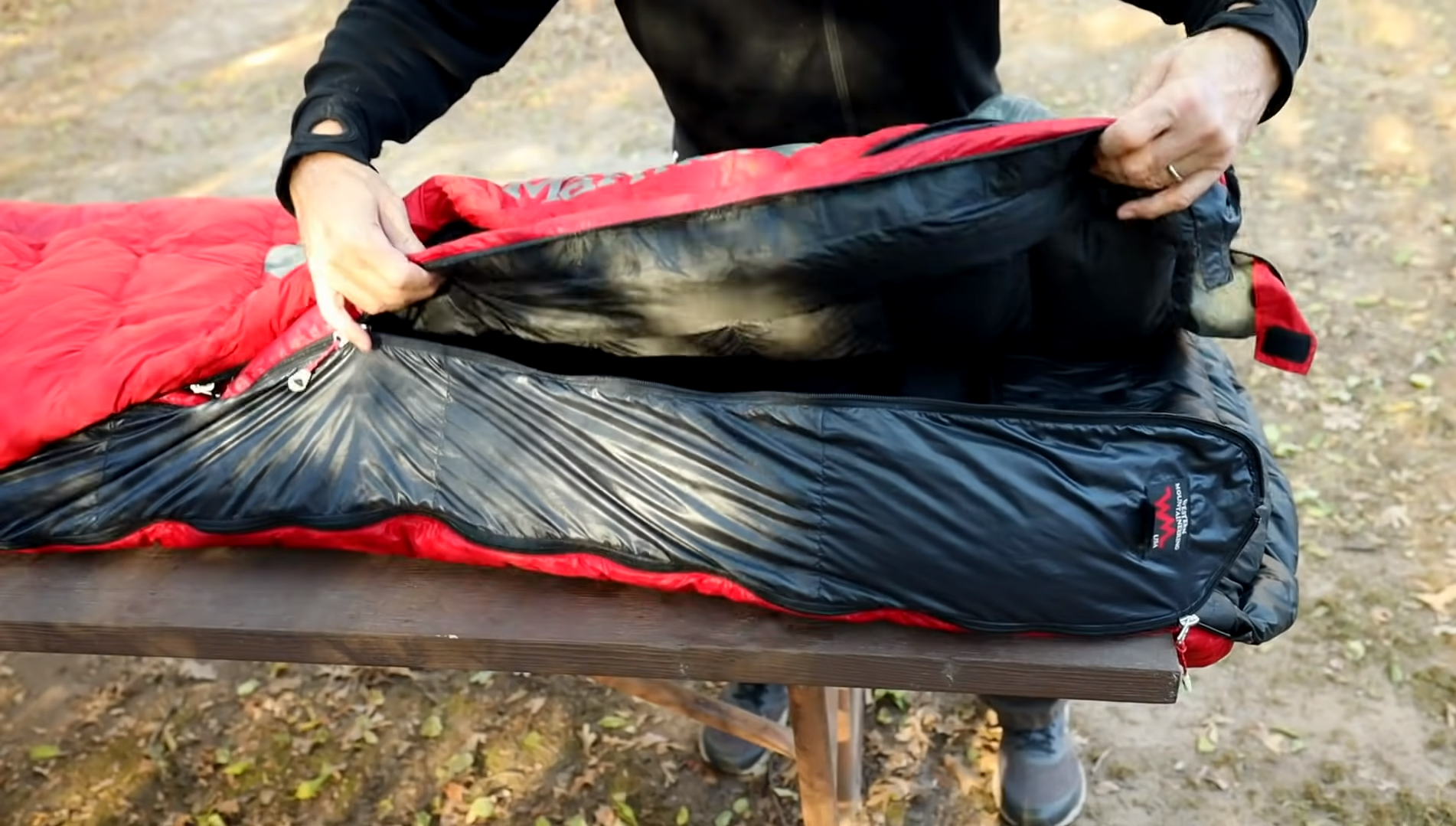




Leave a Review